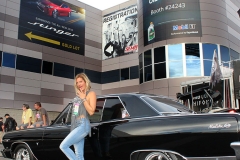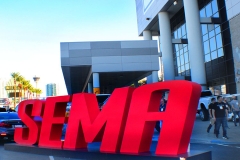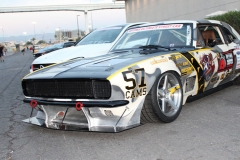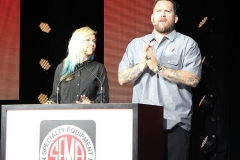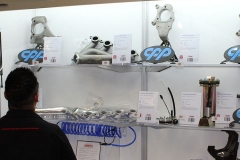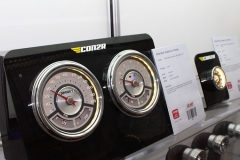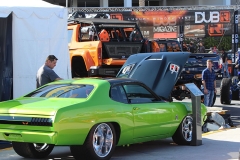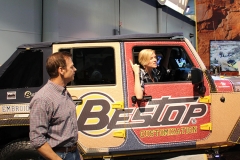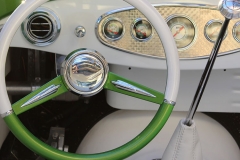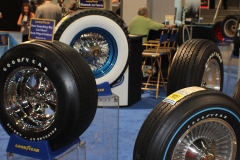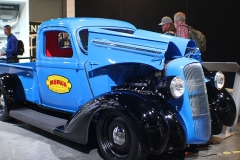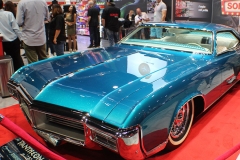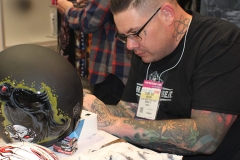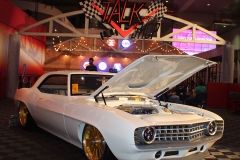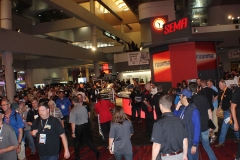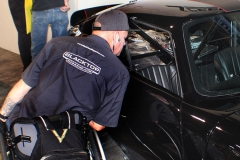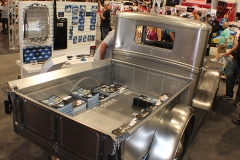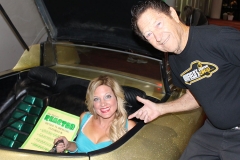A SEMA 2017 Report
Commentary: Tony Colombini, Photos: Blacktop Media Network Staff
There was quite a bit of talk among the aisles of the 2017 SEMA Show regarding the future of the automobile industry. And no doubt plenty of those discussions involved Autonomous cars. One question was: Who was going to own these cars? Will the convention of buying and owning a car be thrown out the window if we can summon a vehicle to take us to where ever we want to go? Not to sound too philosophical, but does that mean the destination is really all we care about? No more of the experience of getting there?
One answer to the ownership question is a new cottage industry of “custom Uber” where a company will buy a fleet of autonomous cars, fix them up and offer these specialty vehicles as a unique value proposition for their service. One attendee suggested that you may have an autonomous vehicle in your garage as a commuter car, but you will still have a non-auto car for weekend drives or specialty events like car shows, off-road or other fuel fed fun.
So, what of the automotive aftermarket? As news accounts suggest millennials are buying their first car at a later age, and really not that interested in the driving experience, would they still customize their vehicles with aftermarket products? Is the concept of personalization have any interest at all to younger drivers?
If the SEMA Show is any indication of the passion for personalization, then I have to conclude the market is volatile. The North Hall where the styling and electronics exhibitors are featured was light with attendees. The New and Noteworthy Exhibitors were spread out in two areas at opposite ends of the show. Half of the exhibitors in the Westgate Hotel meeting rooms were categorized as “styling and electronics” and in the Performance Pavilion’s four large tents, south of the South Hall the action on the floor was light. The exhibitors were there, and the aisles were light with attendees compared to the South Hall and the Central Hall. From what we could deduce, the exhibitors told us the show was good for them, but the noticeable room in the aisles tells us there was not as much interest from the attendees.
Not without invention I might add. There were some cool new products in those areas, and an opportunity for many to collaborate together. We ran into AutoFiber a high-quality micro-fiber towel manufacturer out of San Diego, CA in the Performance Pavillion. After learning about their products, I just had to introduce them to Chris West of Solution Finish. I set up a meeting at the IGL Coatings booth in the North Hall the next day. Solution Finish uses microfiber towels in his plastic trim restoration kits. We had planned to interview Chris West in the IGL Coatings booth. IGL Coatings are a distributor of Solution Finish. AutoFiber may be a great fit for them to cross-market each other’s products. They hit it off perfectly and I am proud to say they are collaborating with each other to further their market reach. It’s stuff like this that I really dig being a part of, at the SEMA Show.
It wasn’t till the second half of the show, Thursday and Friday, when we were in the Central Hall filled with Performance and Restoration exhibitors where we saw the most action on the floor. The aisles were packed and the booths were busy. Interesting as most of these exhibitors in this hall, focused on gas fed vehicles.
It is in this arena within our automotive aftermarket that we find conglomerations take effect. The entrepreneurial companies of the past that were founded by racers, builders, and mechanics have grown out of their britches and gave way to venture capitalists. As these passionate founders retire, the companies are gobbled up by, either an investment firm or a corporate conglomerate. What does this do for John Q. Hot Rodder? We have seen cross-pollination of technology and data. For example a performance exhaust company can share and learn with its sibling historic performance products companies.
In conclusion, I find the automotive aftermarket industry in an exciting time. Technology is moving so fast the historically slow moving industry is finding invention and change the biggest challenge to it’s companies. The industry has expanded from fledgling entrepreneurial start ups to multi-billion dollar conglomerates.
These are exciting times and to quote Mario Andretti: “If you are in control, you are not going fast enough!”


